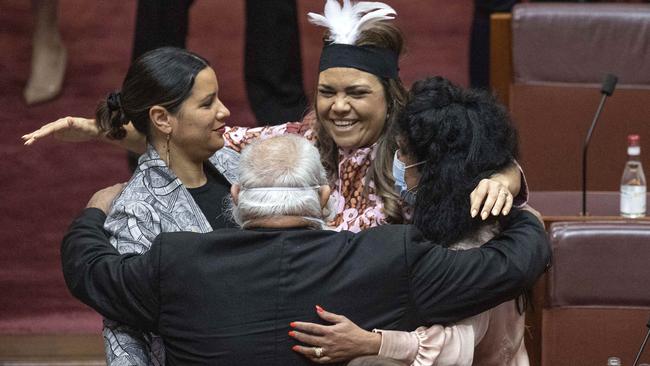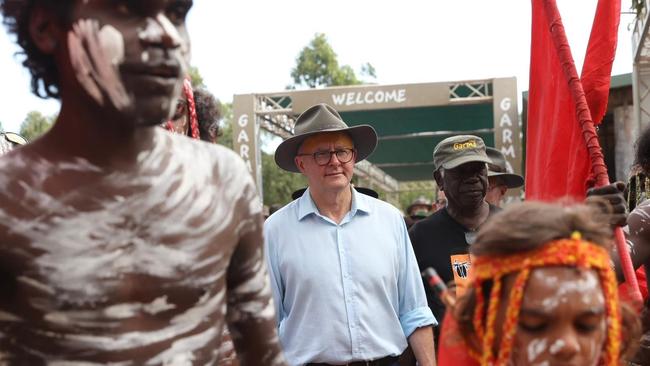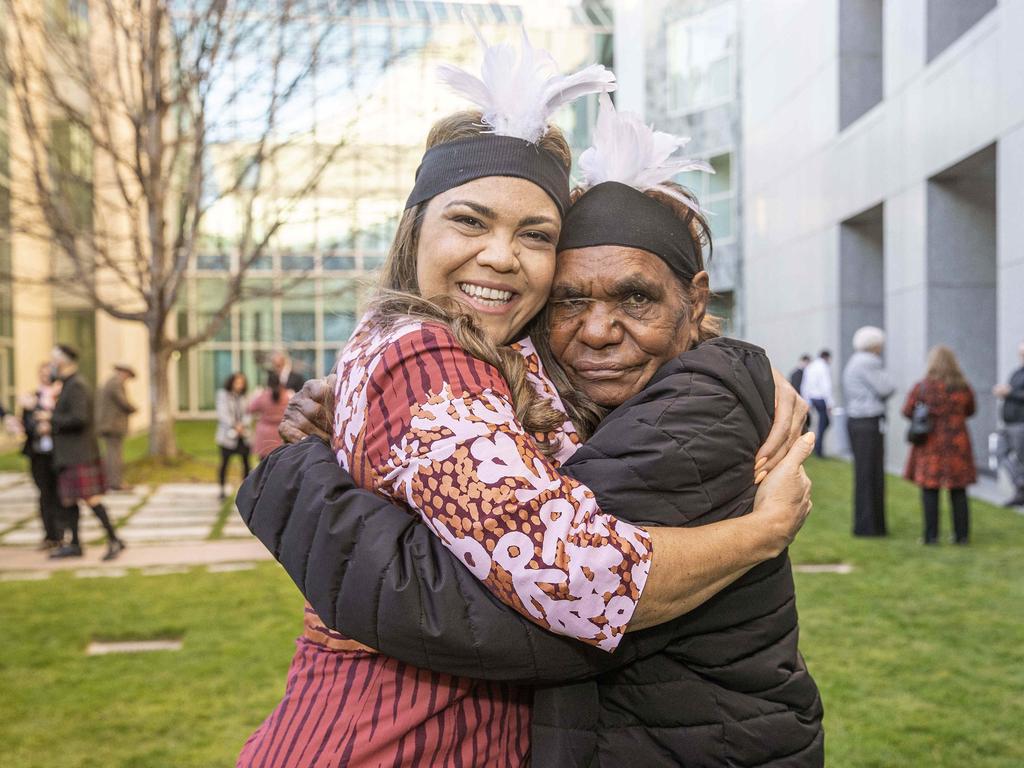For the best possible voice, we need Price’s practical eye

The skirmishes have included messy infighting on two issues. Commentators from the right deny the voice is genuinely conservative. Commentators from everywhere wanted more detail.
The squabble about conservatism is facile. The best yardstick is comparing the voice with what previously was on offer, the one-line bill of rights in a blanket constitutional guarantee of equality. Pick the conservative option. Hardly surprising, given it was designed by obsessive conservatives to operate within, not against, the constitutional system.
As one of those obsessive conservatives, I do not know what irritates me more: people telling me I am not really conservative, or those who opposed the voice relentlessly in favour of a radical solution now asserting ownership and direction.
The stoush over detail is largely the Prime Minister’s own fault. Launching the voice, he effectively said no detail was required. What he meant was no more detail than necessary. This was made clear by Indigenous Australians Minister Linda Burney and Patrick Dodson, the special envoy for reconciliation and the implementation of the Uluru Statement from the Heart.
Dodson promises a clear outline by Christmas. Burney pithily says it would be “nuts” to go to a referendum without sufficient, comprehensible detail.
Now Albanese seems to be changing tack, implying that more detail will be available ahead of the referendum. He proposes taking the co-design report by Tom Calma and Marcia Langton as his starting point.
This makes sense. The Calma-Langton report is easily the most comprehensive document, running to 300 pages of detailed proposals prepared for the former government. But just generally citing that report will not be enough to give detail. It contains a myriad of proposals. Some are indisputable, others more contentious. Which ones will Labor endorse?
Still Albanese’s apparent change of emphasis is welcome. But he has to keep moving in the right direction, and not stop until he has a coherent proposal for the Australian people.
This is all the more necessary because lack of detail has already hurt the incipient Yes campaign. Without a substantive proposal, it is almost impossible to deal with suggestions or objections.

Take Noel Pearson’s reasonable demand that Indigenous people be recognised as the original Australians.Where would that fit in an uncongealed model?
Even more problematic is answering fundamental objections to the voice by those such as Indigenous Northern Territory Country Liberal Party senator Jacinta Nampijinpa Price. Without a model to defend, those criticisms whiz like rocket grenades.
The fundamental point about Price is that you do not have to agree with everything – or anything – she says to take her seriously. She is smart, articulate, sincere, blunt and radiates indigeneity. She delivered a fine, unsettling maiden speech that dripped disdain for the voice. Perhaps more important, people who matter are listening. The Coalition party room is deeply impressed by Price, and if it rejects the voice she will be a major factor.
This puts Price herself in a position of enormous responsibility. If she decides to dynamite the voice and gets it wrong, the wreckage lies at her feet. To sharpen her situation, she is the darling of some seriously right-wing commentators fanatically opposed to the voice. It is a heady but fraught situation for someone who is a new senator.
Of course, these boosters will accept no blame for any outcome and will move on to a new issue and a new champion once the voice is throttled. Price will be left holding the stillborn baby
So, a plausible position for Price would be not to make up her mind too quickly. In current, fluid circumstances, she is in a powerful position to critique the voice towards improvement, not extinction. That could come later if necessary. Fortunately, Price seems well aware of this distinction. Her position is that she does not like the idea of the voice but is prepared to participate in the debate. Nothing more reasonably could be expected.
In the meantime, voice supporters – including me – need to hear her arguments. We do not have to agree but must at least know what they are rather than dismissing her right to make them.
Confrontingly, Price’s negative commentary is far clearer and more comprehensive than the non-existent model of the Albanese government. It is laid out in her maiden speech. Her head argument carries a heavy payload. The voice is mere window-dressing. It will not avert one case of domestic violence or keep one Indigenous kid out of jail.
Voiceists will argue correctly that no one measure can solve all problems and it is possible to take both mega and practical steps at the same time.
But it is true that unless the voice is at least calculated to promote practical good, it will fail. The plausible position is that a solemn voice identifying Indigenous problems and posing solutions would have the highly practical effect of highlighting those problems and fomenting action. But this is a good argument, not an indisputable fact.
Price’s disdain for mere symbolism is profound. She is sick of being welcomed on to country and being celebrated as an Indigenous person rather than an Australian citizen who also is Indigenous. You can understand this position. Numerous welcomes to country in a single meeting can become meaningless ritual.
But the symbolism of a constitutionally entrenched voice is different. It is symbolic in a real sense, embodying a deep shared commitment of all Australians. It is symbolic like the flag or the act of Federation, not self-conscious identification of country on SBS.
Price worries deeply that the voice will divide by race rather than unite the country. This also is the intractable position of a whole team of anti-voice commentators.
But the voice gives no one special rights, merely enshrining an ongoing national conversation on Indigenous concerns. Properly executed – a live question – it will promote unity, not division
Price’s most confronting position is that black Australia is dominated by an aristocracy of victimisation whose position depends on a continuing narrative of misery and whose powers will be constitutionally embedded by the voice. Without entering this debate but acknowledging the view is shared by a proportion of Indigenous Australians, interest-group capture is always an issue with new legislative structures. The best course is to so rigorously design a structure that capture is impossible.
Price worries the voice will bureaucratise Indigenous people without delivering them real benefits. She clearly has the wreck of the Aboriginal and Torres Strait Islander Commission in mind. The one useful legacy of ATSIC is we know what not to do. The voice cannot become so bloated with functions, staff and resources that its true purpose as an ongoing national bond is obscured.
Finally, Price is terrified the voice will cement a “handout culture” that has prevented the self-realisation of Indigenous people for decades.
A voice certainly would not do this directly, although it might incidentally aggravate the perceived problem if constituted the wrong way with the wrong people. But we should ensure this does not happen rather than kill the voice on supposition.
This is where the constitutional responsibility of Price becomes acute. She may or may not ultimately vote against the voice. But in the meantime she has enormous power to ensure the model is the best possible or even the least-worst option.
Because if the voice wins at a referendum – admittedly a big ask – blanket opposition will do nothing to address Price’s concerns. So, the respectful suggestion would be that as a practical person she should concentrate on some practical points of design.
What about some legislative terms of reference requiring the voice to concentrate on practical solutions and to provide a detailed blueprint to resolve any major issue identified? What about requiring it to engage with public service experts in designing these blueprints?
What is wrong with parliament specifying priority areas for the voice: for example, mental health, substance abuse, education, domestic violence, economic independence and self-reliance? After all, parliament has full power to define the voice. Could anyone object to the voice being required to establish standing working parties on all such priority subjects? What about a solemn preamble to the legislation declaring and requiring the commitment of the voice to national unity and a diverse but single Australian community?
If we are worried about interest-group hijacking, let’s devise provisions requiring diversity of membership. Let’s limit terms of members and require they rotate regularly. Let’s have a tough mechanism for the removal of members, with the involvement of independent external bodies.
Finally, why not a parliamentary committee that not only facilitates the voice but also monitors and critiques it, and conducts an overall review every three years or so? Many, though not all of these options appear in the Calma-Langton report. As the Prime Minister says, there is a mountain of literature to provide further constructive ideas.
The voice should be debated and designed, not simply deployed or denied. For those with a critical voice on the voice, duty calls.
Greg Craven is a constitutional lawyer and former vice-chancellor of the Australian Catholic University.





Last Sunday at the Garma Festival, Anthony Albanese fired the first shot in the campaign for an Indigenous voice. But we are still only skirmishing: the blood and ruptured intestines will come later.